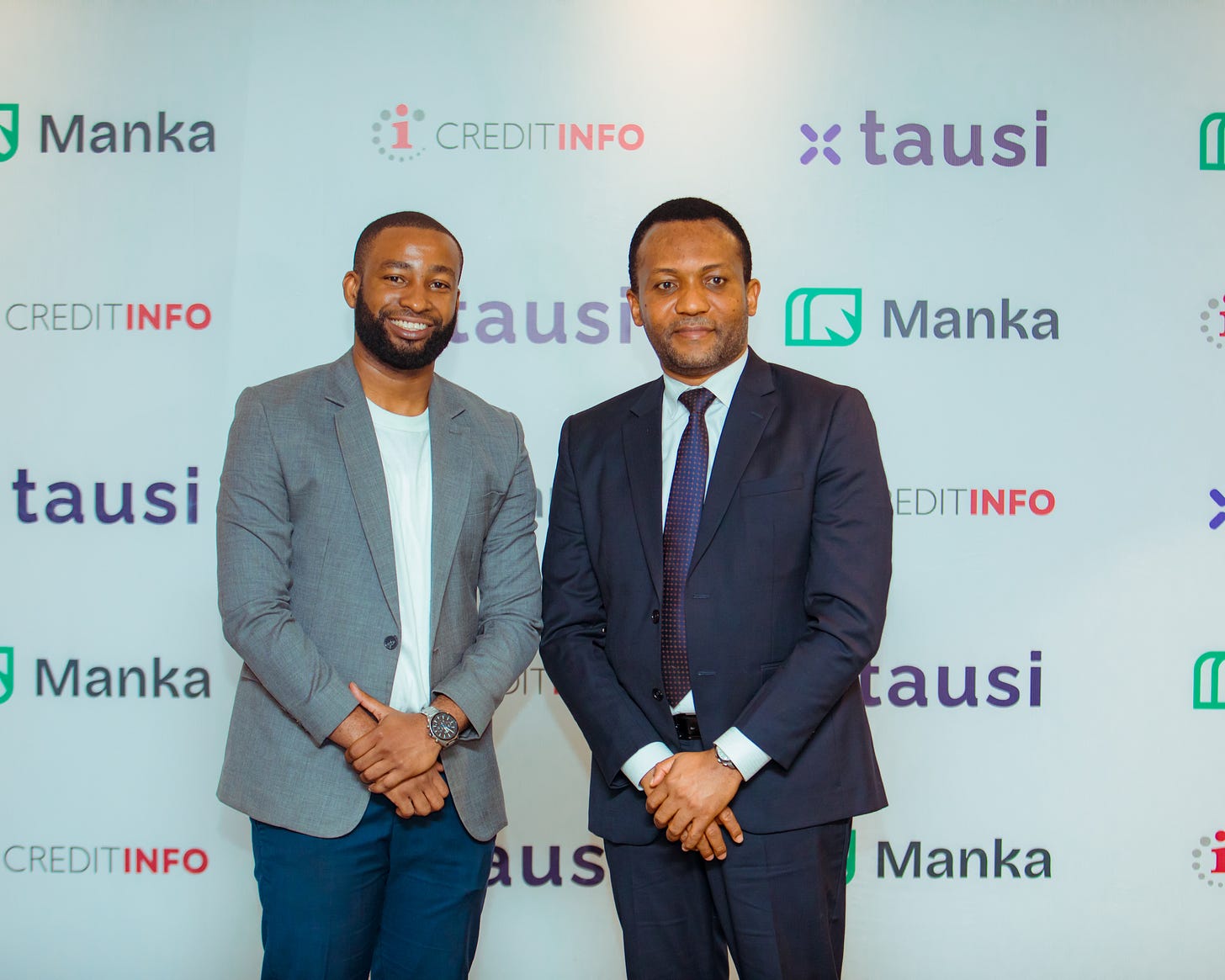
Background
When Harvey Kadyanji, CTO at Tausi Africa, observed fish sellers in Dar es Salaam waking up at 5 AM to travel to the ferry for auctions, he noticed they spent 70% of their time commuting and bidding, leaving only 30% for their actual business of cooking and selling.
His observation about inefficient time use would later parallel a key insight about Tanzania's credit officers—they too were spending disproportionate time on manual tasks rather than value-added analysis.
Even today, most credit officers are still reviewing massive piles of printed bank statements to determine creditworthiness.
That process typically takes three hours per customer, as noted in Tausi documents obtained by Atoms & Bits. The challenge has become especially acute given recent growth in our lending market.
According to Creditinfo Tanzania's data, the sub-sector has grown to encompass 403 financial institutions handling 163 million loans for over 11 million borrowers.
In addition, the importance of mobile money in Tanzania's credit market cannot be overstated. According to Nassor Abubakar, a senior specialist at NMB's innovation lab, "7.5 million people in Tanzania have bank accounts, and we have 24.4 million mobile money wallets (as of March 2024)." This dramatic difference indicates why credit assessment needs to look beyond traditional banking data.
The Evolution
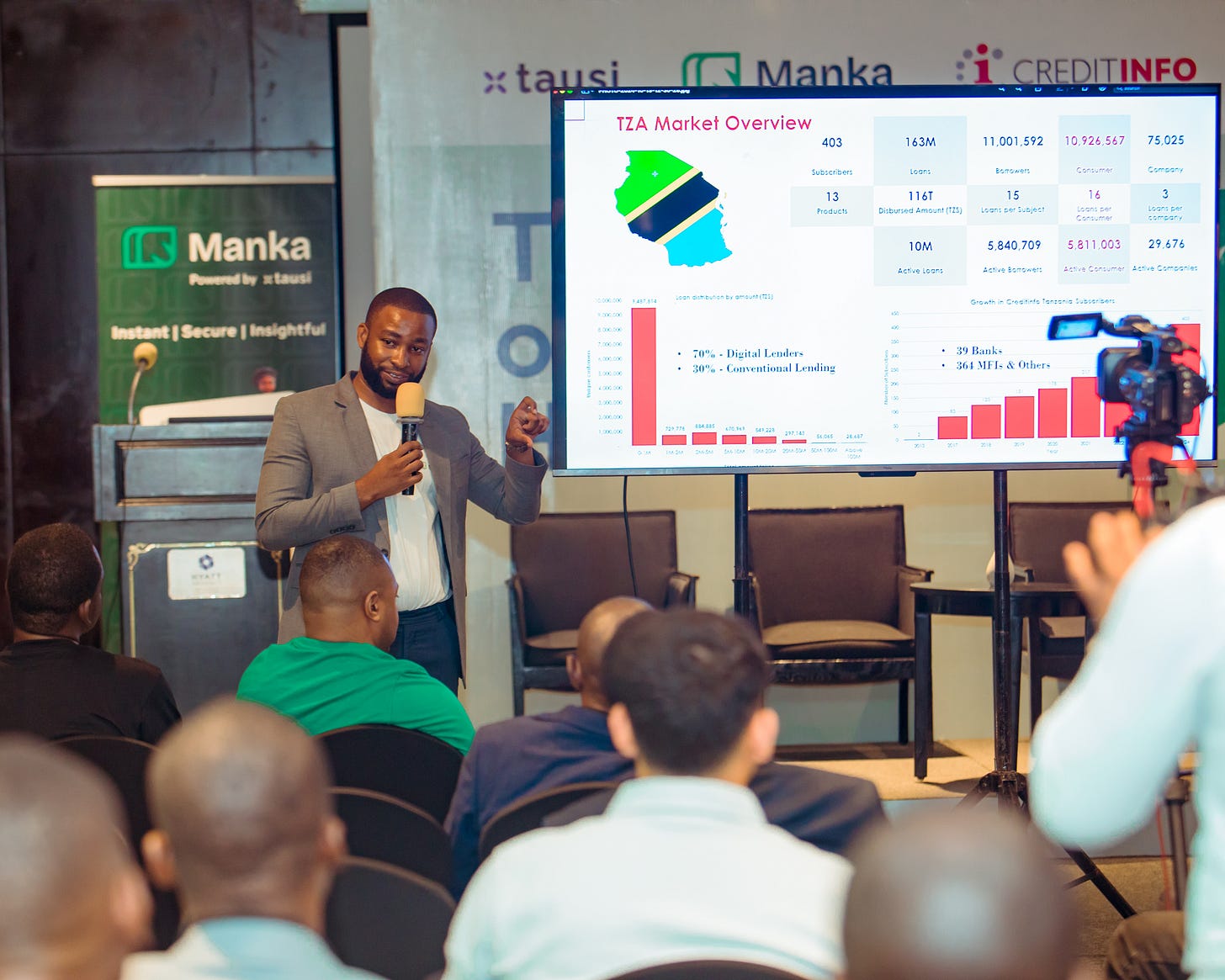
Tanzania's digital lending scene has evolved significantly since 2017, when there were just 83 lending institutions. Creditinfo Tanzania's data shows that today 70% of loans come from digital lenders while 30% come from conventional sources. Most loans (729,778) are small, falling in the TZS 0 to 1 million range, while only 56,065 loans exceed TZS 100 million, demonstrating how microlending dominates the market.
Several specialized lenders have emerged to serve specific segments. Ramani recently secured $32 million in Series A funding to support micro-distribution centers. El-dizer focuses on higher education, having disbursed TZS 180.45 million to over 1,244 students. Sarafu serves retail shops, processing over TZS 5 billion monthly for 8,000 retailers (as of May 2021!). Currently, the B2B e-commerce company can offer credit to 15,000 customers.
It's in this context that Tanzanian fintech startup Tausi developed Manka. And launched it last week. The platform analyzes both bank and mobile money statements, reducing assessment time from three hours to two minutes.
Here’s how it works:
Statement Receipt and Verification—Customer emails statements to a lender who uses Manka. For fraud prevention purposes, the platform checks the legitimacy of each statement to ensure it hasn't been altered. This step ensures data integrity and builds trust in the information used for credit scoring.
Data Extraction and Analysis— Important data points, like the individual's phone number, transaction dates, and amounts are pulled from the statements. That data is then scrutinized to generate valuable insights for lenders. Analysis covers various aspects of the user's financial behavior, including affordability, transaction patterns, and credit usage.
Affordability Assessment—The system evaluates user affordability based on their transaction history and the lender's specified risk tolerance/appetite. This helps financial institutions establish suitable loan amounts that borrowers can repay without facing economic distress/hardship
Transaction Pattern Visualization—Lenders are provided with visual representations, like 1D, 2D, or 3D graphs, showcasing the user's cash inflows and outflows. These visualizations, tailored to the required detail level, illuminate trends and patterns in the user's financial activities, enabling lenders to gain a comprehensive understanding of their financial behavior
Digital Credit Usage Analysis—The user's digital credit activities are examined, including frequency of borrowing, amounts borrowed, and interest paid on loans. This process can help credit officers gain insights into the borrower's creditworthiness and their ability to manage debt responsibly.
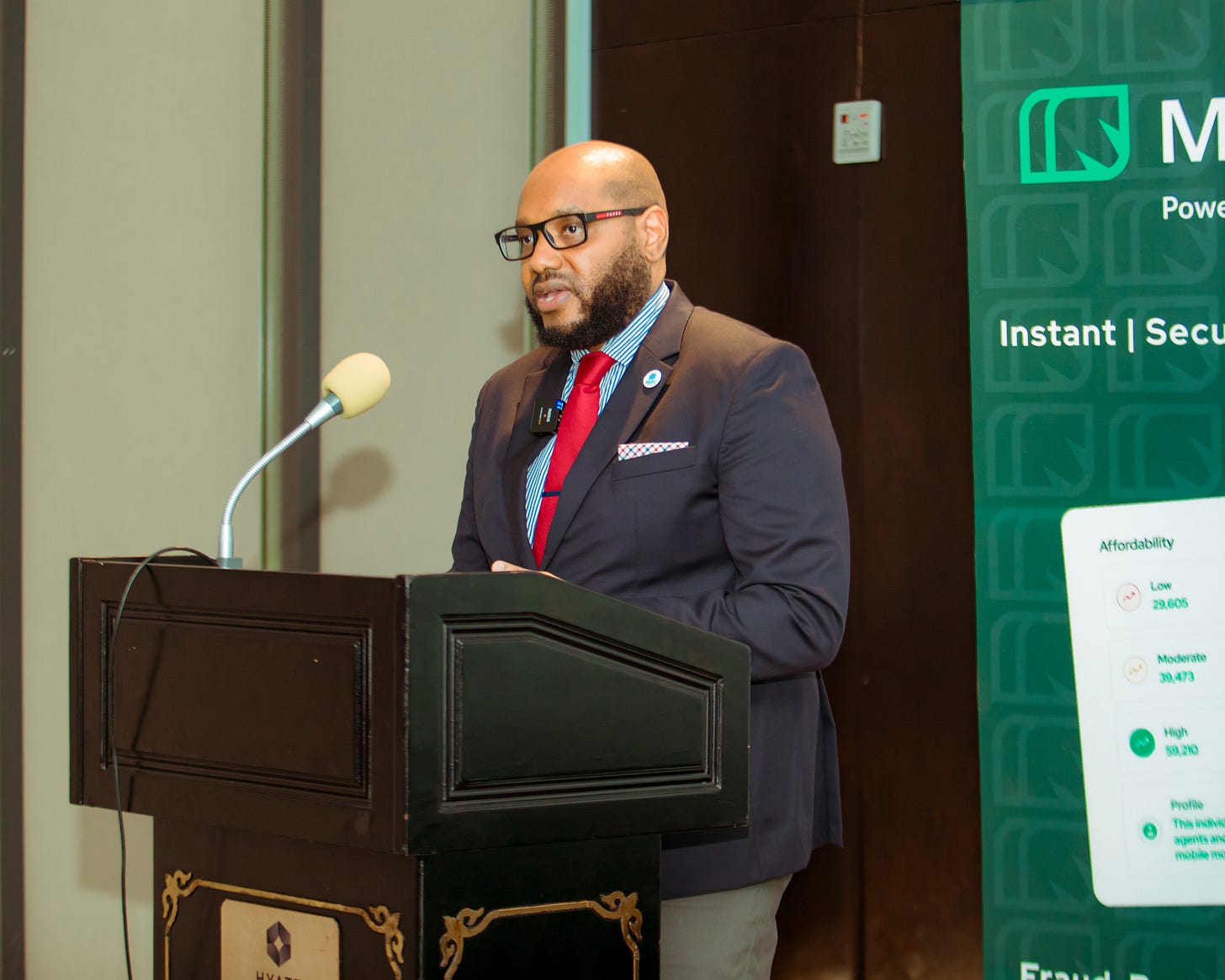
At launch, Edwin Urasa, Country Manager of CreditInfo Tanzania, noted that "Manka will significantly optimize how we assess credit risk in underserved markets." The platform extracts over 300 data points from each statement and includes features for fraud detection plus natural language queries about financial data.
Eric Massinda, CEO of the Financial Sector Deepening Tanzania (FSDT), stated on October 24: "I'm particularly excited [...about] an innovative platform that leverages alternative data to assess credit risk," emphasizing how the platform's approach can transform lending practices.
He went on to illustrate the platform's potential impact in expanding financial inclusion, stating that "[Manka] offers new ways of unblocking credit from individuals and small businesses.
Product Ecosystem Context
The timing of Manka's development coincides with major changes in Tanzania's financial sector regulation and infrastructure.
In May 2023, Tanzania implemented its Personal Data Protection Act, requiring financial institutions to protect customer data more rigorously. In January 2024, ICRA partnered with Creditinfo Tanzania to establish the country's first credit rating agency, aiming to improve risk management practices for businesses.
The banking sector itself shows remarkable growth. According to EY’s Tanzania Banking Sector Report, total assets reached TZS 46 trillion in 2022, increasing by 17.3% from the previous year. Customer deposits grew by 11.4% to TZS 30.6 trillion, while loans and advances increased by 24.9% to TZS 26 trillion. The two largest banks, CRDB and NMB, control nearly half of this market, with combined assets of TZS 25.4 trillion.
New innovations are making banking more accessible. NMB Bank recently launched NMB Pesa, allowing customers to open accounts through sales agents with just a government ID and TZS 1,000 (approximately $0.4). As Derick Kazimoto, CEO of Tausi Africa Technologies, explains, this creates "an opportunity for any street vendor, bus conductor, bicycle repairer, or mompreneur to build a score with the bank and later qualify for unsecured digital loans of up to $250."
However, the rapid growth of digital lending brings challenges. Reuben Mwatosya, COO of embedded finance enabler Tembo, recently expressed concerns about responsible lending practices following an incident where an OYA Micro-Credit Tanzania customer was allegedly harmed by debt collectors on October 8.
Reuben advocates for better data sharing between fintech companies, banks, and mobile money operators, as well as improved direct debit capabilities on mobile money platforms.
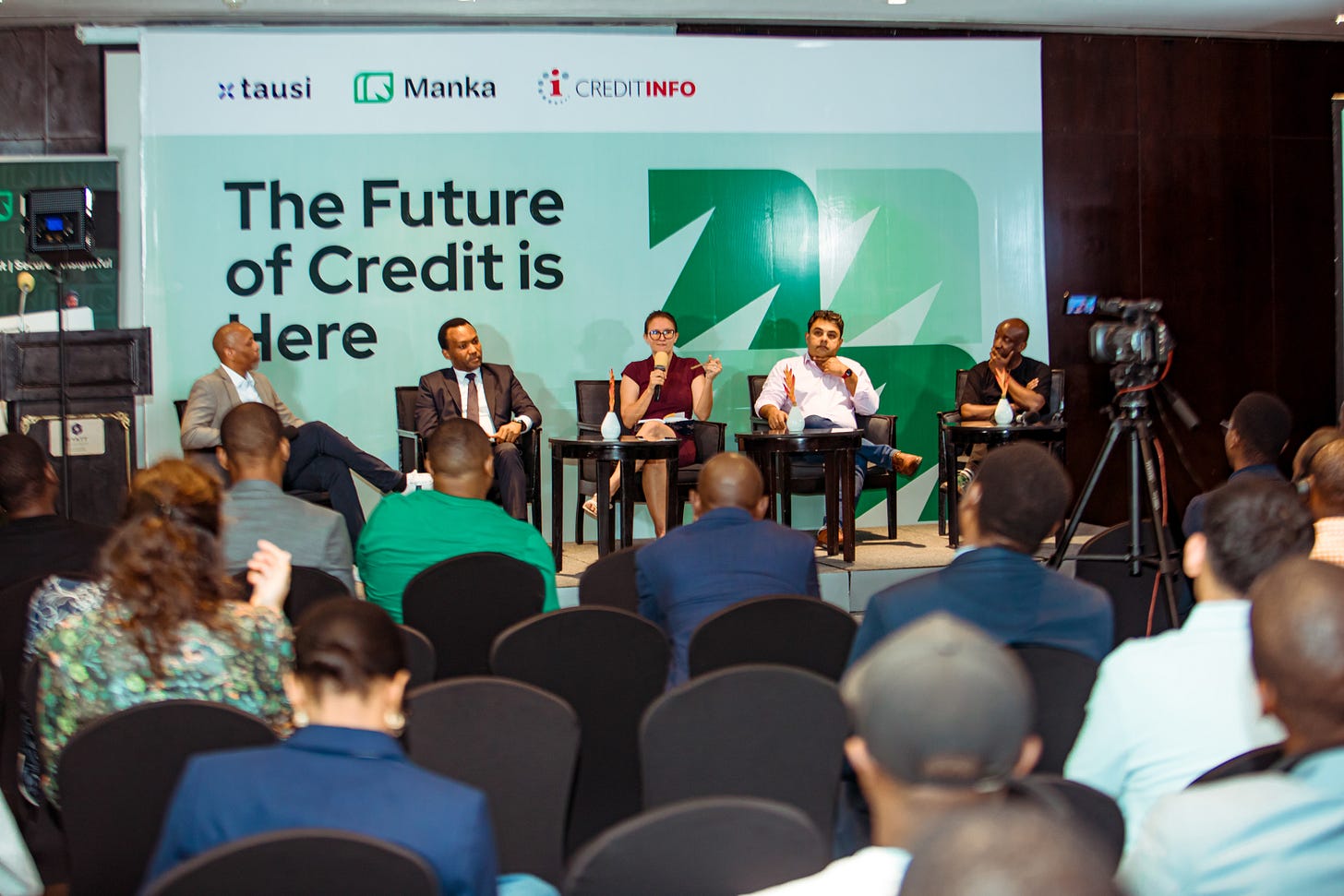
The sector is responding with new infrastructure. March 2024 saw two major steps:
Establishment of the Tanzania Fintech Association (TAFINA) to connect our fintech ecosystem.
Launch of the Tanzania Instant Payment System (TIPS), which has been in development since February 2019.
Manka's response to these market needs is reflected in its tiered service structure.
Its "Pay As You Go" option starts with 20 free tokens (each valued at TZS 1,000) and targets smaller institutions like microfinance providers and savings groups (i.e., VICOBA).
Each token allows 100 queries on Ask Manka™ (credit analysis AI), making it a cost-effective way for credit officers to discover hidden patterns in financial data.
Manka’s Enterprise tier serves banks and larger digital lenders, while a Dedicated or In-House option offers full white-label (rebrandable) solutions for major institutions.
The platform currently works with several major banks, including CRDB (which holds 33.33% of the nation's mortgage market), NMB (10.19%), and Absa. Rather than competing with specialized lenders like Ramani, El-dizer, or Sarafu, Manka positions itself as infrastructure, helping traditional financial institutions compete more effectively in the digital space.
Conclusion
Tanzania's credit market is moving toward an open finance model, where customers can securely share their financial data across institutions to access better services. The Bank of Tanzania's recent guidance for digital lenders and its support for innovations like TIPS are signs of a regulatory environment that balances innovation with consumer protection.
This evolution becomes even more interesting when you look at Tanzania's economy as a whole. The World Bank forecasts a 5.6% increase in real GDP (the value of goods and services produced nationally) in 2024, with the financial sector playing an increasingly important role.
“The ability to obtain actionable data from various transaction records is exciting because it enables more accurate credit risk assessment and provides lenders with insight,” FSDT’s Massinda says. “But loans and credit are just the beginning of what open finance can offer.”

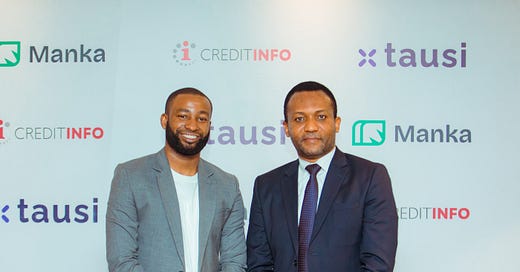

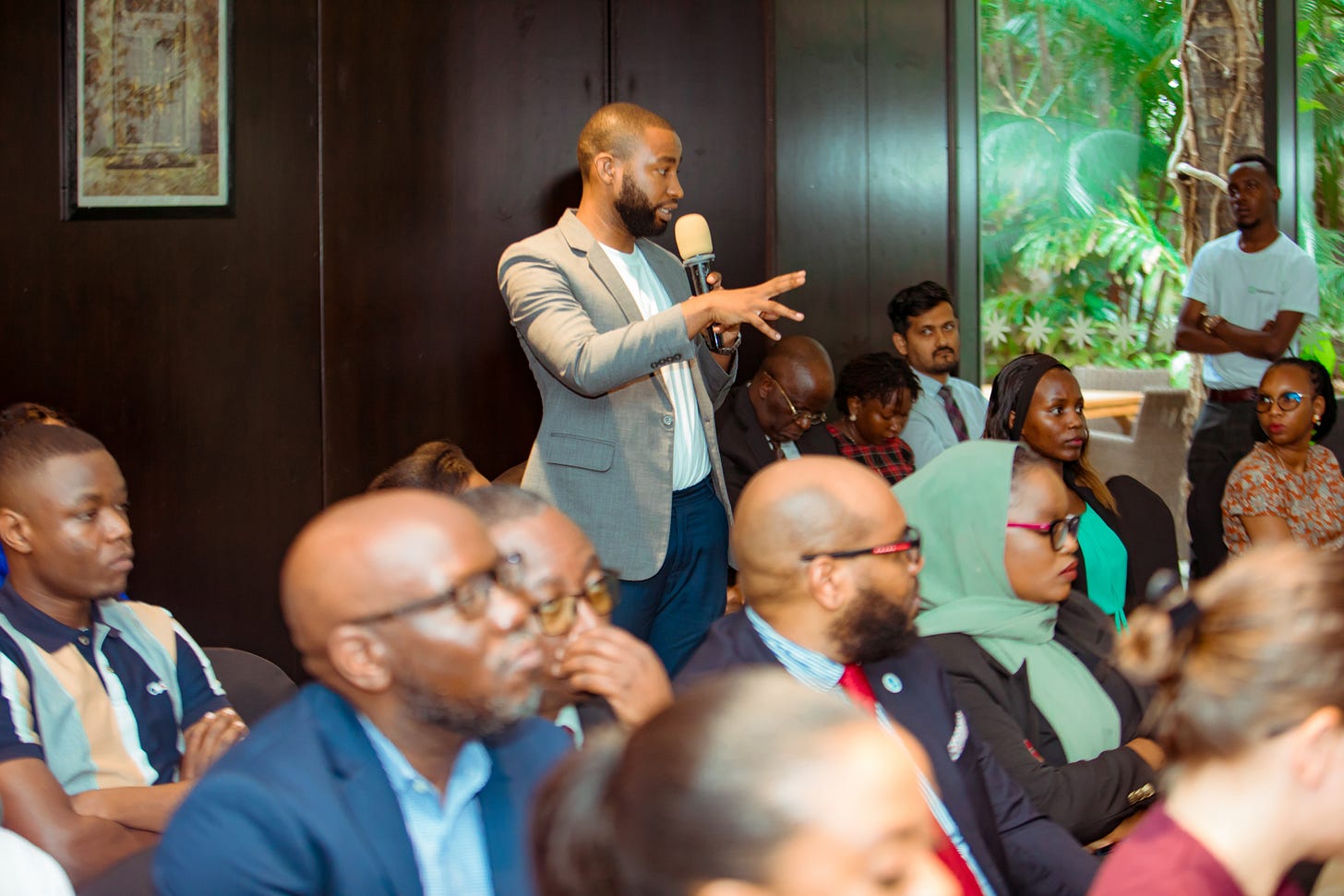
Thanks, Isai, for this article on Manka. It's indeed a significant industry milestone. Apart from credit reference bureaus and mobile money platforms, what other data sources does Manka envision integrating to enhance its analysis capacity?